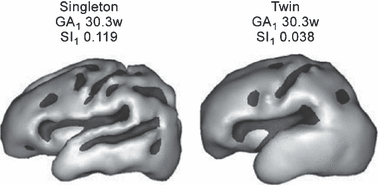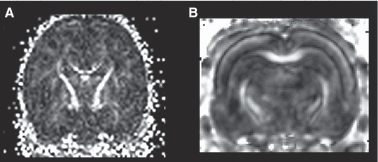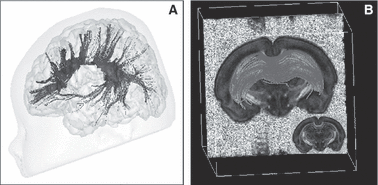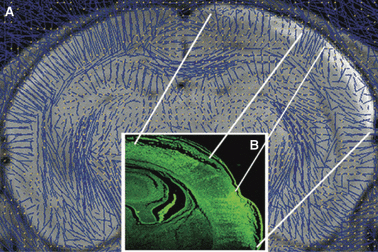Neuroimaging of cortical development and brain connectivity in human newborns and animal models
- PMID: 20979587
- PMCID: PMC2992417
- DOI: 10.1111/j.1469-7580.2010.01280.x
Neuroimaging of cortical development and brain connectivity in human newborns and animal models
Abstract
Significant human brain growth occurs during the third trimester, with a doubling of whole brain volume and a fourfold increase of cortical gray matter volume. This is also the time period during which cortical folding and gyrification take place. Conditions such as intrauterine growth restriction, prematurity and cerebral white matter injury have been shown to affect brain growth including specific structures such as the hippocampus, with subsequent potentially permanent functional consequences. The use of 3D magnetic resonance imaging (MRI) and dedicated postprocessing tools to measure brain tissue volumes (cerebral cortical gray matter, white matter), surface and sulcation index can elucidate phenotypes associated with early behavior development. The use of diffusion tensor imaging can further help in assessing microstructural changes within the cerebral white matter and the establishment of brain connectivity. Finally, the use of functional MRI and resting-state functional MRI connectivity allows exploration of the impact of adverse conditions on functional brain connectivity in vivo. Results from studies using these methods have for the first time illustrated the structural impact of antenatal conditions and neonatal intensive care on the functional brain deficits observed after premature birth. In order to study the pathophysiology of these adverse conditions, MRI has also been used in conjunction with histology in animal models of injury in the immature brain. Understanding the histological substrate of brain injury seen on MRI provides new insights into the immature brain, mechanisms of injury and their imaging phenotype.
© 2010 The Authors. Journal of Anatomy © 2010 Anatomical Society of Great Britain and Ireland.
Figures







References
-
- Allin M, Matsumoto H, Santhouse AM, et al. Cognitive and motor function and the size of the cerebellum in adolescents born very pre-term 3. Brain. 2001;124:60–66. - PubMed
-
- Anbeek P, Vincken KL, Groenendaal F, et al. Probabilistic brain tissue segmentation in neonatal magnetic resonance imaging. Pediatr Res. 2008;63:158–163. - PubMed
-
- Anderson NG, Laurent I, Woodward LJ, et al. Detection of impaired growth of the corpus callosum in premature infants. Pediatrics. 2006;118:951–960. - PubMed
-
- Anjari M, Srinivasan L, Allsop JM, et al. Diffusion tensor imaging with tract-based spatial statistics reveals local white matter abnormalities in preterm infants. Neuroimage. 2007;35:1021–1027. - PubMed
Publication types
MeSH terms
LinkOut - more resources
Full Text Sources
Other Literature Sources
Medical

